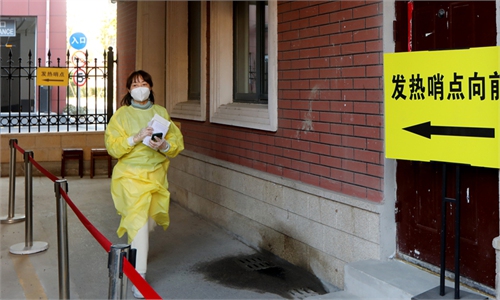
Shanghai highways at night. Photo: VCG
China's financial hub Shanghai is targeting a 5.5 percent-plus GDP growth this year, which experts said is a relatively ambitious goal considering the city's affluence. The target reflects confidence in an economic recovery as the impact of coronavirus lockdowns in 2022 ebbs and China reopens its borders.
According to a government work report delivered by Mayor Gong Zheng on Wednesday, it is suggested that Shanghai's GDP should grow by more than 5.5 percent this year - one of the main goals of economic and social development, according to stcn.com.
The city also aims to increase its general public revenue this year by 5.5 percent, while research and development expenditure is expected to account for about 4.3 percent of the city's GDP.
Shanghai also aims to keep the urban surveyed unemployment rate at about 5 percent. Consumer prices are forecast to rise about 3 percent, and input in environmental protection should account for about 3 percent of the city's GDP, the work report said.
"2023 is the first year to fully implement the spirit of the 20th CPC National Congress, the key year to implement the 14th Five-Year Plan (2021-25), and the first year to implement various aspects of work under the new Shanghai municipal government," Gong said.
In 2021, Shanghai's GDP reached 4.32 trillion yuan, with per capita GDP amounting to about 178,000 yuan.
The metropolis is striving to accelerate a recovery after a two-month citywide lockdown in the first half of 2022.
Experts said that 5.5 percent growth is quite an ambitious goal for a city like Shanghai, whose economy is nearly equivalent to the level of medium developed countries that have per capita GDPs of more than $20,000.
Tian Yun, an independent macro analyst, told the Global Times that setting the goal reflects local officials' confidence on the city's economic recovery in multiple aspects. For one thing, Shanghai might be preparing some measures to boost services opening-up and recovery, and officials believe that those policies should give a strong boost to the local economy.
Tian noted that Shanghai is witnessing breakthroughs in technologies like large aircraft and chip technologies. Those and other undisclosed technological achievements are expected to drive the economy.
The resumption of international tourism also will be a big bonus for Shanghai as an international consumption city, he noted.
Gong also announced detailed pro-growth measures, with consumption, finance and high technologies being among the major engines.
He said that Shanghai will prioritize the recovery and expansion of consumption by efforts such as efficiently organizing the 6th China International Import Expo and deepening construction of the city as an international consumption center.
He also revealed that Shanghai will continue to promote the construction of major projects, with a total investment of 215 billion yuan ($31.7 billion) this year. The city will accelerate the expansion of investment, capacity and efficiency of high-end manufacturing and modern services industries.
In the next five years, the added value of core industries in the digital economy should account for 18 percent of the city's GDP.
In terms of finance, Shanghai will strengthen its resource allocation capacity as an international financial center, deepen the construction of the global asset management center, and accelerate the construction of an international financial assets trading platform. The city will also boost offshore yuan trade and overseas financing services.
Zhou Yu, a research fellow at the Shanghai Academy of Social Sciences, told the Global Times that the city might make up for shortfalls in the construction of an international financial center this year, such as setting up a foreign exchange futures market.
He suggested that Shanghai should develop a new-energy futures market, an area that lags behind the size and development speed of China's new-energy vehicle market.
Global Times


